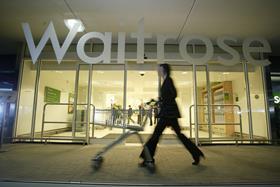
Lower prices have helped Waitrose to sales growth, but they contributed to a substantial hit on the bottom line.
Reporting its results for the 52 weeks to 27 January, John Lewis Partnership said like-for-like sales at Waitrose had risen 0.9 per cent to £6.75 billion, with growth accelerating in the second half of the year.
The company said the improvement was down to improved competitiveness on the back of lowering the prices of hundreds of its value line, Essential products. However that appeared to have a knock-on effect on profits, with operating profit before exceptionals down 32.1 per cent to £172 million due to lower margins after not all cost price inflation was passed onto customers and investments in customer experience.
'This was a challenging year,' directors said. 'We reset gross margin in response to the weaker sterling exchange rate and our commitment to competitive pricing. The resulting lower rate of gross margin was equivalent to more than 80 per cent of the shortfall in operating profit before exceptional items, and it has also led to an exceptional branch impairment charge of £38.9m.
'The remaining operating profit shortfall in the year was from a combination of different factors, including some short-term operational impacts from significant changes to our branch management structures and the introduction of more flexible working models in our shops. These new ways of working take time to bed in, but the changes will enable us to have the right partners in the right place at the right time to give customers the best possible service.'
Investments during the year included in-store improvements at 127 branches, as well as investment in the website to improve the online grocery operation, which saw sales growth of 10.9 per cent.
The retailer also pointed out that it developed more than 2,500 products in the year, and announced plans for a new food innovation centre, due to open in summer 2018 in Bracknell.



